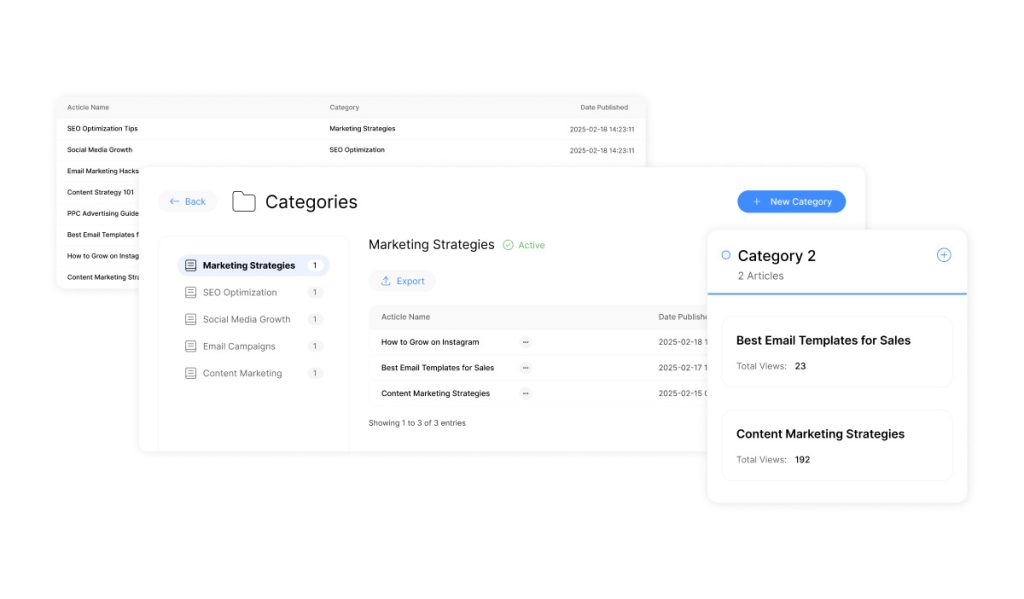Customer KB Portal: How to Implement and Optimize

A secure, centralized platform for managing support interactions is no longer optional for modern businesses. Well-designed customer portals empower users to resolve issues independently while reducing strain on service teams. These platforms consolidate chat, email, and social media inquiries into unified ticket systems, ensuring no request slips through the cracks.
Organizations using streamlined CRM solutions often see faster resolution times and higher satisfaction rates. By offering 24/7 access to documentation and past interactions, companies enable clients to find answers without waiting for agent assistance. This self-service approach cuts ticket volumes and lets teams focus on complex cases. Additionally, customers can easily access a comprehensive service offerings overview, which aids them in understanding the full range of available options. This transparency not only empowers clients but also minimizes confusion, leading to more informed decision-making. As a result, organizations can enhance their overall efficiency and strengthen customer loyalty.
Effective implementation requires careful planning. Domain setup, authentication protocols, and content structure directly impact adoption rates. Analytics tools within these systems reveal common pain points, helping businesses proactively improve their resources.
When executed properly, a professional portal builds trust and demonstrates commitment to client success. It becomes more than a support tool—it transforms into a strategic asset that drives operational efficiency and strengthens relationships.
Key Takeaways
- Centralized platforms reduce ticket backlogs by enabling self-service problem-solving
- Multi-channel integration ensures consistent support across email, chat, and social media
- User-friendly design increases adoption rates and decreases training costs
- Analytics identify recurring issues to optimize knowledge base content
- Secure authentication protocols protect sensitive client data
Understanding the Role of a Customer KB Portal

Digital hubs transform how companies manage inquiries and resources. These systems combine secure document storage, ticket tracking, and self-help tools in one interface. Businesses using such platforms report 40% faster resolution times for common issues compared to traditional email-based support.
Core Functions and Strategic Value
Centralized platforms allow users to submit requests, track progress, and review historical interactions. Organizations with optimized systems reduce repeat inquiries by 32% through improved documentation access. Real-time analytics help identify trending issues, enabling proactive resource updates.
Access Management Fundamentals
Registration workflows balance security with simplicity. Required fields marked with asterisks (*) ensure essential data collection without overwhelming users. Approval processes typically complete within 24 hours, with email confirmations verifying account authenticity.
| Authentication Method | Security Level | User Convenience | Setup Complexity |
|---|---|---|---|
| Email Verification | Medium | High | Low |
| Authenticator Apps | High | Medium | Moderate |
| SMS Codes | Medium | High | Low |
Access controls enable tiered visibility – critical for enterprises managing multiple client groups. Password reset features and profile editors maintain security without sacrificing usability. Systems supporting multi-factor authentication see 67% fewer unauthorized access attempts than basic login setups.
Implementing the Customer KB Portal: Step-by-Step Guide
Deploying an effective support platform demands precise technical execution and strategic customization. Proper configuration ensures seamless user experiences while maintaining enterprise-grade security.
Domain Configuration & Security Protocols
Begin by linking your primary domain to the platform. Assign a URL slug that aligns with existing web properties for brand consistency. Enable SSL encryption during setup to protect data transmissions. Authentication options range from single-step email verification to time-based authenticator apps, balancing security needs with user convenience.
Visual Identity & Navigation Design
Transform generic interfaces into branded environments using:
- Custom color schemes matching corporate guidelines
- Responsive banner images optimized for all devices
- Intuitive dropdown menus for quick resource access
Organize content into logical categories using collapsible sections. Position high-traffic resources in prominent menu locations to reduce search time.
Ticket Management & Permissions
Configure default inboxes to automatically route new requests. Set visibility rules so users only see tickets linked to their account or organization. Implement role-based access controls through:
- Pre-approved group memberships
- Self-registration with admin oversight
- Multi-tier permission levels
Customize ticket templates to display relevant case details and resolution timelines. Integrate support forms directly into the interface, eliminating redirects to external pages.
Optimizing Your Customer KB Portal for Efficiency

Strategic refinements transform basic platforms into high-performance assets. Regular analysis of usage patterns and content effectiveness helps businesses maintain peak operational performance while improving user satisfaction.
Enhancing Knowledge Base and SEO Features
Organize resources using intuitive tagging systems that connect related articles. Implement metadata fields for author credits and publication dates to build content credibility. Search visibility improves through:
- Customizable sitemaps with priority settings
- Optimized URL structures using primary keywords
- Social media preview controls via Open Graph tags
| SEO Element | Best Practice | Impact Level |
|---|---|---|
| Meta Titles | 55 characters max | High |
| Descriptions | 160 characters optimal | Medium |
| Header Tags | Hierarchical structure | Critical |
“Articles with estimated read times see 28% higher completion rates than those without.”
Managing User Feedback and Support Interactions
Embed satisfaction surveys below help articles to gauge content effectiveness. Real-time comment moderation tools maintain quality discussions while filtering spam. Escalation workflows automatically convert unresolved queries into support tickets. In addition to these tools, implementing customer satisfaction survey best practices can provide deeper insights into user experience and content relevance. Regularly analyzing survey results allows teams to identify trends and areas for improvement, ultimately enhancing the overall support system. By integrating feedback loops into the continual development process, organizations can ensure they meet evolving customer needs effectively.
Visibility controls enable granular access management. Public-facing modes showcase general resources, while authenticated views display personalized case histories. Integrated analytics track:
- Top-rated articles
- Common search failures
- Content update priorities
Broken link checkers and version control systems ensure resource reliability. Automated alerts notify teams when articles require revisions due to outdated information.
Conclusion
Implementing robust self-service solutions marks a pivotal shift in modern client engagement strategies. Businesses adopting secure login systems and intuitive interfaces see measurable improvements in operational workflows. Reduced ticket backlogs and faster resolution timelines directly correlate with well-structured knowledge bases and streamlined access protocols.
Continuous refinement remains critical for sustained success. Regular analysis of user behavior patterns helps refine content organization and authentication processes. Teams prioritizing feedback integration and technical upgrades maintain higher adoption rates across all user groups.
Strategic configuration choices—from custom domain URLs to role-based account permissions—establish professional credibility while safeguarding data. Organizations that pair these technical foundations with responsive support channels create ecosystems where users resolve issues efficiently. This approach fosters loyalty while freeing teams to tackle complex challenges.
Ultimately, optimized platforms become growth accelerators. They transform routine interactions into opportunities for demonstrating expertise and building trust. When executed effectively, these systems deliver compounding returns through improved satisfaction metrics and scalable service models.

